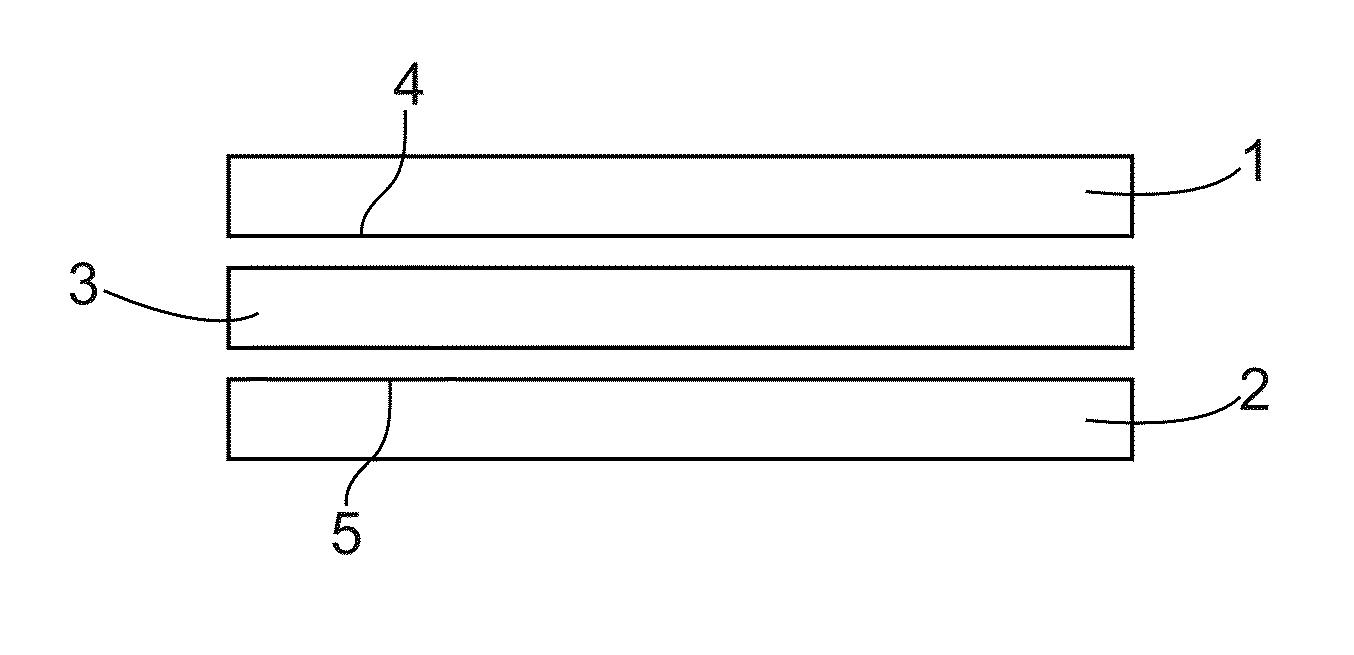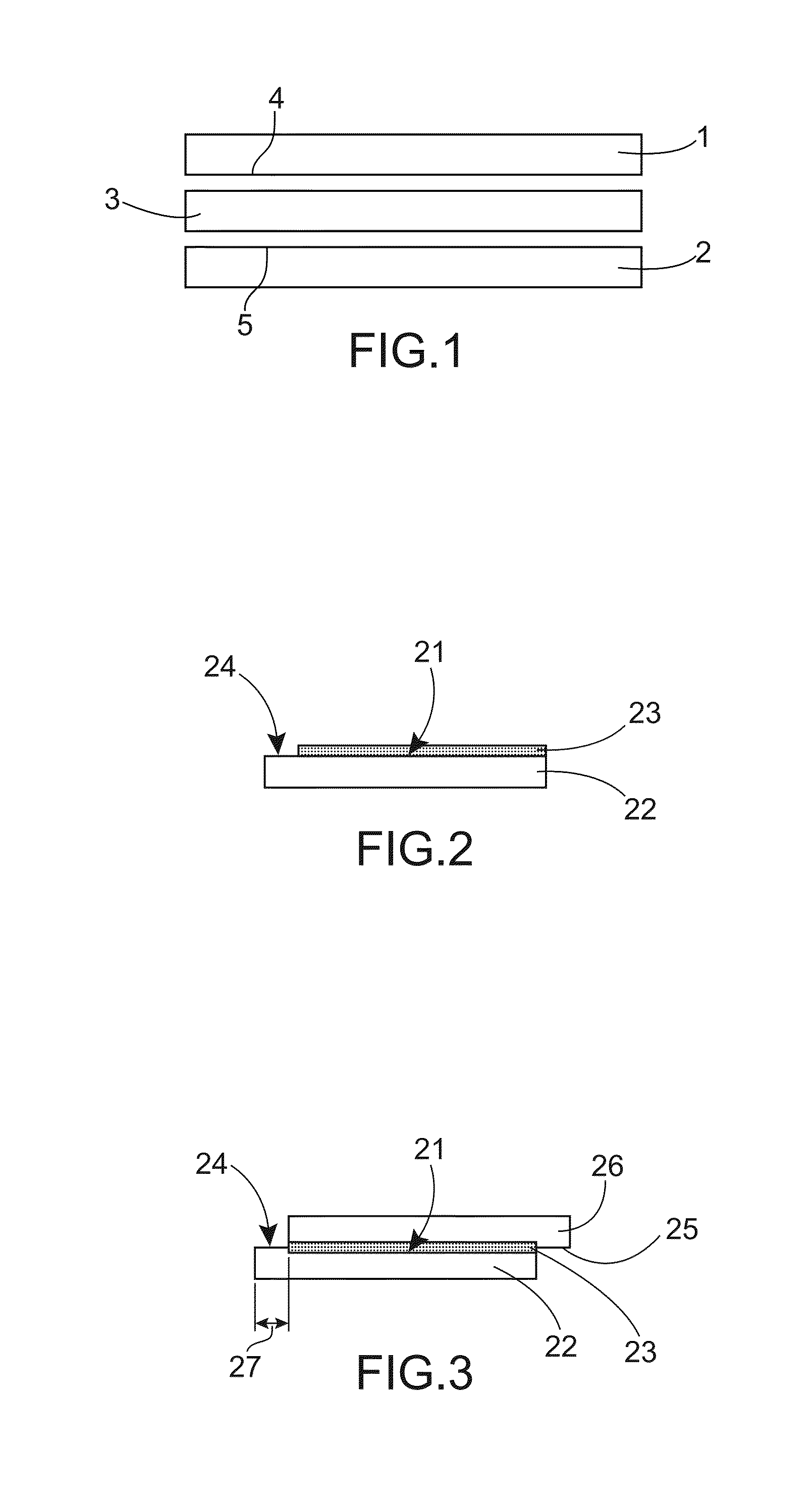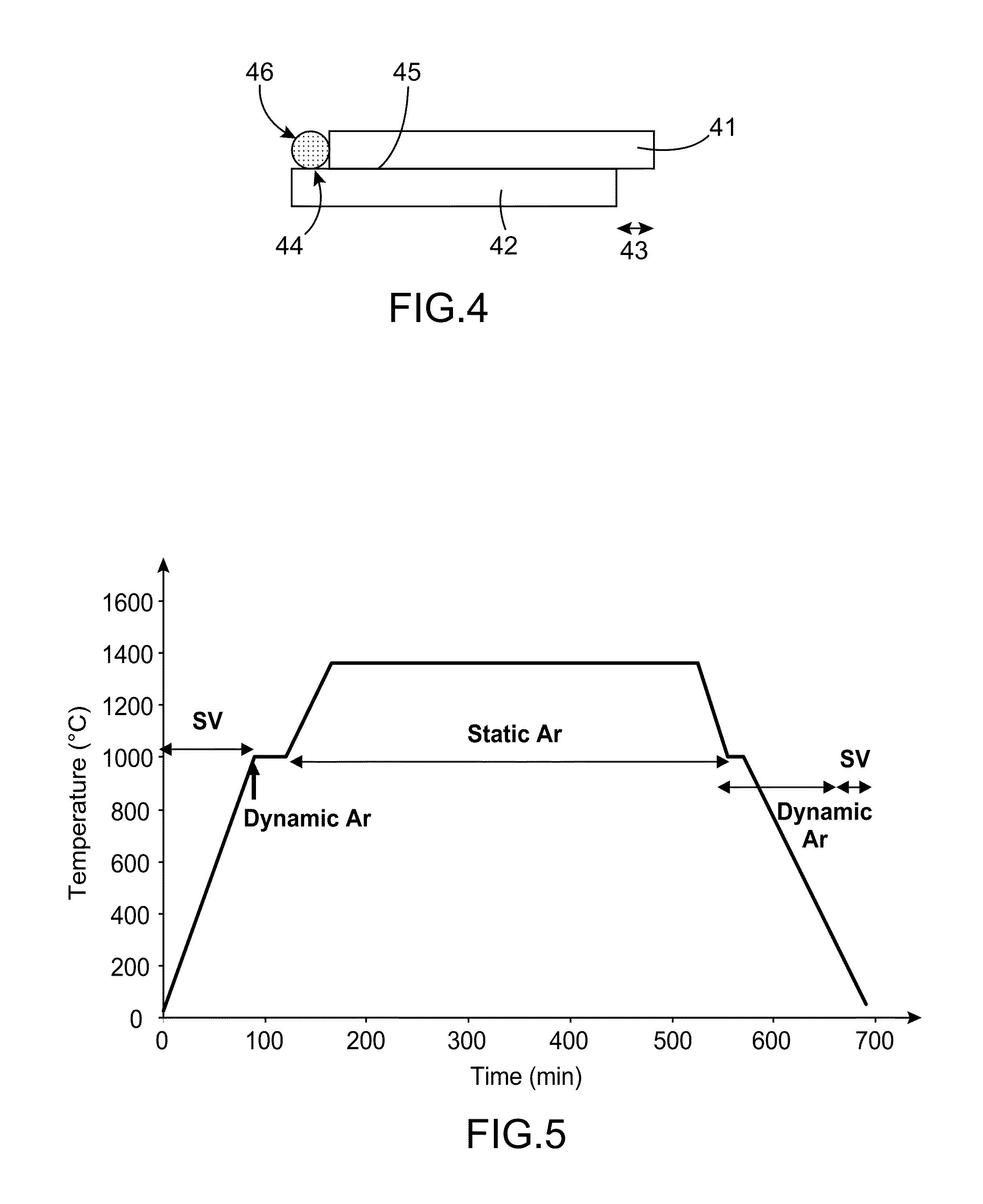Method for assembling parts made of sic materials by means of non-reactive brazing in an oxidizing atmosphere, brazing compositions, and gasket and assembly obtained by said method
- Summary
- Abstract
- Description
- Claims
- Application Information
AI Technical Summary
Benefits of technology
Problems solved by technology
Method used
Image
Examples
example 1
[0262]This example describes the preparation of a brazing composition, alloy consisting of a mixture of oxides of composition 62% by weight of SiO2-15% by weight of Al2O3— and 23% by weight of CaO, and the saturation with silicon of a part of said mixture.
[0263]a) Preparation of the Brazing Composition.
[0264]The targeted brazing composition of 62% by weight of SiO2-15% by weight of Al2O3-23% by weight of CaO is prepared from SiO2 powder, mullite (compound defined as 3Al2O3-2SiO2) and the compound CaO—SiO2.
[0265]These powders are weighed while respecting the proportions, then mixed and ground in a mortar. The powder mixture is then subjected to a plateau of 4 hours in air at 1590° C. After cooling, a glass is obtained. Analyses carried out by X-microprobe indicate that the mixture is homogenous and that the composition by weight is 61.2% SiO2-15.0% Al2O3-23.4% CaO.
[0266]The glass obtained is recovered then crushed in a mortar.
[0267]A portion of the glass is conserved for the tests wi...
example 2
[0281]This example is a comparative example that describes the preparation of composite / composite bonds, assemblies between two parts made of CeraSep A40C® composite material by implementing a brazing method (brazing in sandwich configuration) that uses a brazing composition consisting of 62% by weight of SiO2-15% by weight of Al2O3 and 23% by weight of CaO.
[0282]On the one hand, an assembly is prepared between two parts made of CeraSep C® composite material belonging to a first lot (batch) designated lot A and, on the other hand, an assembly is prepared between two parts made of Cerasep A40C® composite material belonging to a second lot (batch) designated lot B.
[0283]The interfaces of the assemblies obtained respectively between the two parts made of composite material belonging to lot A and the two parts made of composite material belonging to lot B are then characterised and compared.
[0284]a) Composite Materials
[0285]Cerasep A40C® composite material is a SiC / SiC composite with a ...
example 3
[0304]This example describes the preparation of bonds, assemblies between two parts made of CeraSep A40C® composite material, and between two parts made of pure sintered a silicon carbide SiC, by implementing a method of brazing (brazing in sandwich configuration) which uses a brazing composition consisting of 62% by weight of SiO2-15% by weight of Al2O3 and 23% by weight of CaO not saturated with silicon or the same brazing composition but saturated with silicon.
[0305]This example moreover describes tests, mechanical tests carried out on these assemblies in order to compare the mechanical behaviour thereof.
[0306]A) The Composite Material, and Pure Sintered α SiC.
[0307]The composite material selected in this example 3 is the composite Cerasep A40C® (already described above in example 2, paragraph a)).
[0308]The lot selected in this example 3 is lot A, in other words the reference in terms of stoichiometry (stoichiometric SiC).
[0309]The pure sintered α SiC is alpha SiC (Hexyloy® of St...
PUM
| Property | Measurement | Unit |
|---|---|---|
| Temperature | aaaaa | aaaaa |
| Temperature | aaaaa | aaaaa |
| Fraction | aaaaa | aaaaa |
Abstract
Description
Claims
Application Information
 Login to View More
Login to View More - R&D
- Intellectual Property
- Life Sciences
- Materials
- Tech Scout
- Unparalleled Data Quality
- Higher Quality Content
- 60% Fewer Hallucinations
Browse by: Latest US Patents, China's latest patents, Technical Efficacy Thesaurus, Application Domain, Technology Topic, Popular Technical Reports.
© 2025 PatSnap. All rights reserved.Legal|Privacy policy|Modern Slavery Act Transparency Statement|Sitemap|About US| Contact US: help@patsnap.com



